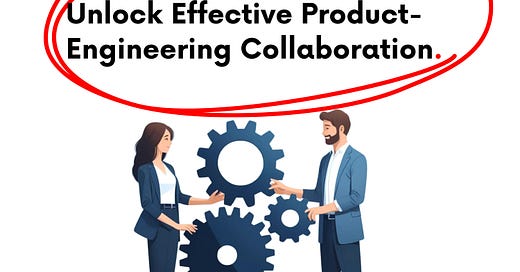Quote
"Great things in business are never done by one person; they're done by a team of people." - Steve Jobs
Poll
💯 Framework // Concept // Mental Model
Welcome to our deep dive into the fascinating world of product manager-engineer partnerships. In today's edition, we'll explore the key elements that make this relationship tick, share real-world example…
Keep reading with a 7-day free trial
Subscribe to The Product Channel By Sid Saladi to keep reading this post and get 7 days of free access to the full post archives.




